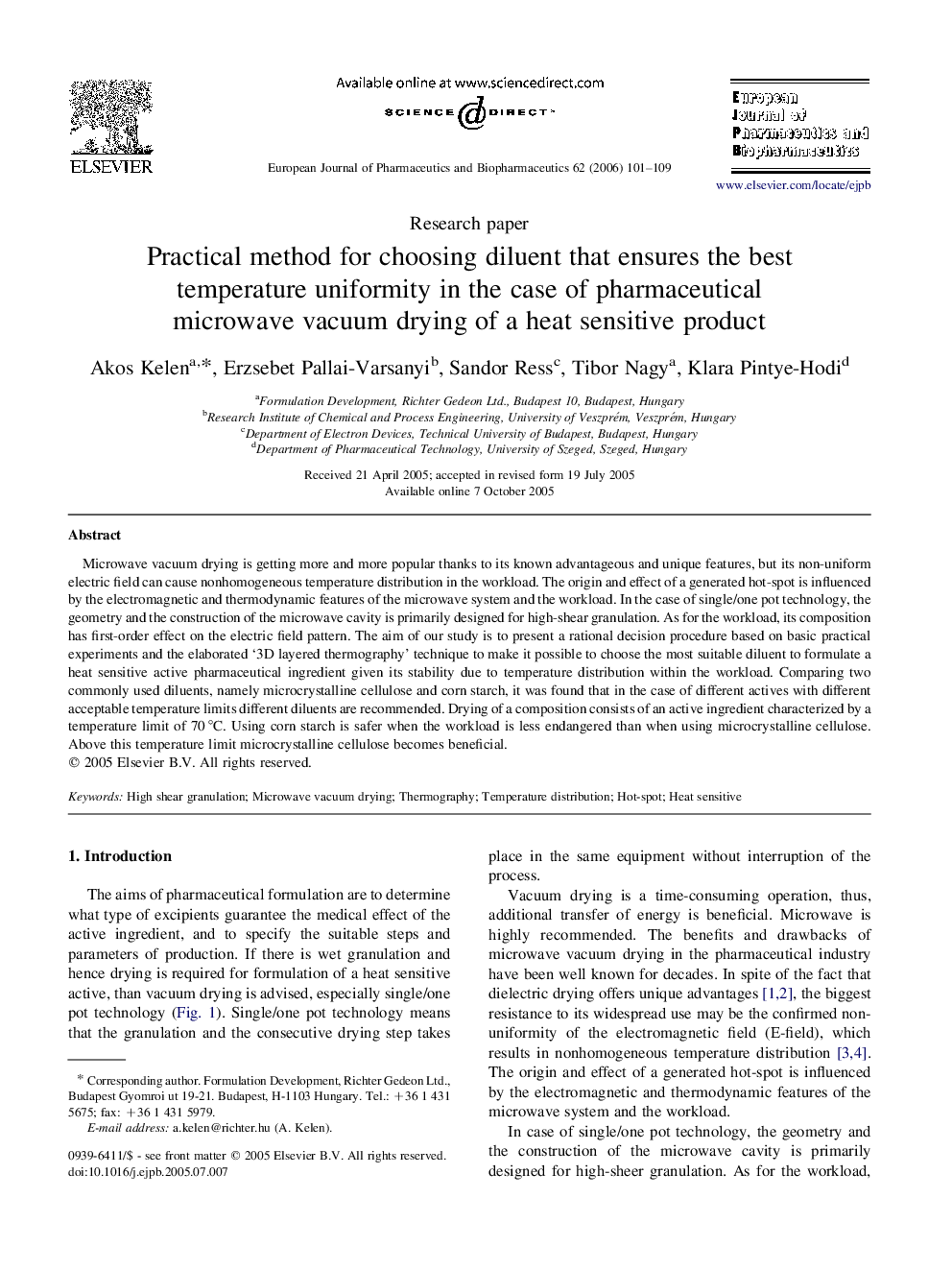| Article ID | Journal | Published Year | Pages | File Type |
|---|---|---|---|---|
| 2085083 | European Journal of Pharmaceutics and Biopharmaceutics | 2006 | 9 Pages |
Microwave vacuum drying is getting more and more popular thanks to its known advantageous and unique features, but its non-uniform electric field can cause nonhomogeneous temperature distribution in the workload. The origin and effect of a generated hot-spot is influenced by the electromagnetic and thermodynamic features of the microwave system and the workload. In the case of single/one pot technology, the geometry and the construction of the microwave cavity is primarily designed for high-shear granulation. As for the workload, its composition has first-order effect on the electric field pattern. The aim of our study is to present a rational decision procedure based on basic practical experiments and the elaborated ‘3D layered thermography’ technique to make it possible to choose the most suitable diluent to formulate a heat sensitive active pharmaceutical ingredient given its stability due to temperature distribution within the workload. Comparing two commonly used diluents, namely microcrystalline cellulose and corn starch, it was found that in the case of different actives with different acceptable temperature limits different diluents are recommended. Drying of a composition consists of an active ingredient characterized by a temperature limit of 70 °C. Using corn starch is safer when the workload is less endangered than when using microcrystalline cellulose. Above this temperature limit microcrystalline cellulose becomes beneficial.
